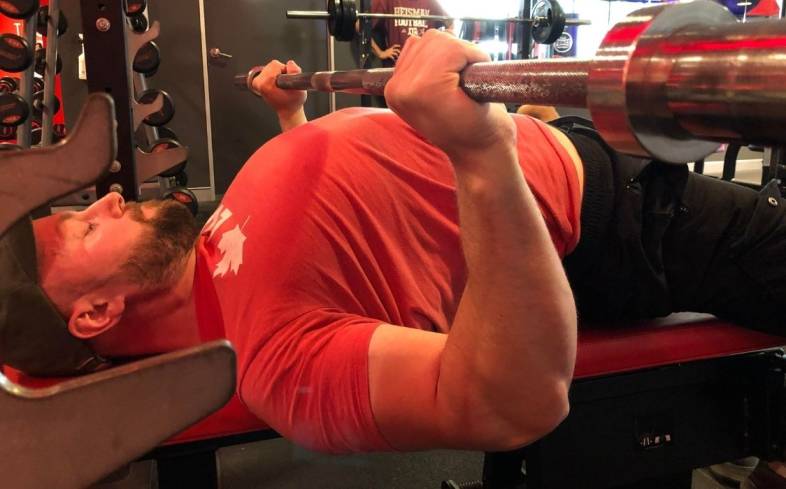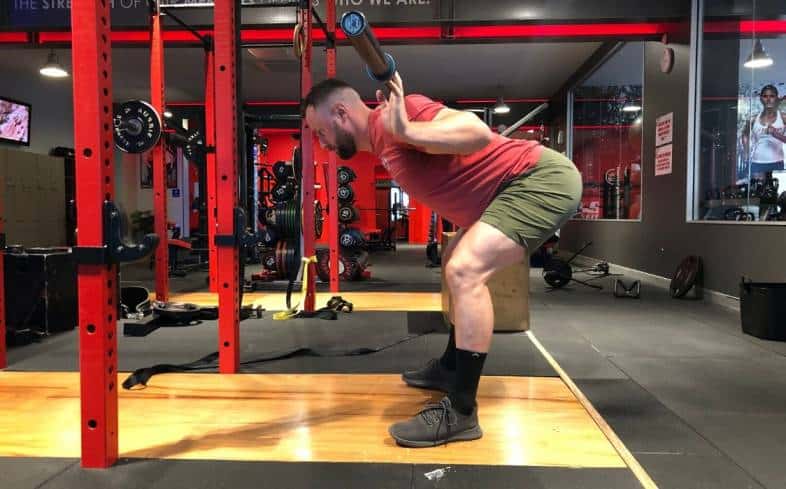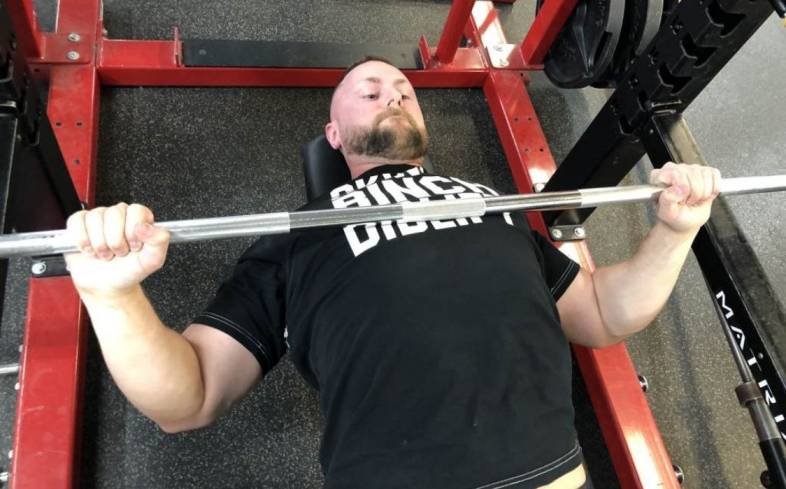Is It Good to Workout Chest and Back Together

Most people will have an opinion on how workouts should be organized in the training week. There can be many reasons why you would want to program your training in a certain order. People who train for muscle mass will often keep a single muscle group for each training day.
But can you work out back and chest on the same day? Yes, you can train back and chest on the same day. There are many ways to program the training session together safely and easily. It can also make your workouts more efficient. However, you need to consider what your weaknesses are to figure out how you would structure the back and chest exercises.
In this article, we will go through everything you need to know about training back and chest on the same day, whether it is right for you, and if you were to, how you would structure it.
Is Training Back And Chest On The Same Day Safe?
If you're concerned about whether it's safe to train back and chest on the same day, rest assured, it's totally safe and is considered a very common training split.
When I refer to safety, I don't mean that training back and chest on the same day could lead to injury. Moreso, I'm referring to your ability to recover, since a lack of recovery can lead to burnout or less than effective results.
However, there is nothing inherently dangerous with training opposite muscle groups on the same day. Exercises can be done safely if you manage the number of training sets, the intensity of weights, the difficulty of sets, and rest times appropriately.
Is Training Back And Chest On The Same Day Effective?
Training back and chest on the same day can be effective but how you do it depends on what you are training for. You may still train back and chest together but you'll want to organize the workout slightly differently depending on whether you are training for muscle mass or training for maximal strength.
If you are training for building muscle mass, then exercise order has been shown to not matter as much when studies have been conducted.
However, if you are training for strength, it has been shown that exercise order DOES matter.
Research has shown that the largest gains occur in the exercises performed at the start of the training sessions.
So if you want to prioritize getting a stronger chest, you would perform a heavy compounded movement to start the workout, like a bench press.
Alternatively, if you want to prioritize getting a stronger back, then you would consider starting the workout with a heavy back movement, like a pull-up or barbell row.
If you wanted to prioritize each 'push' and 'pull' equally, you could do a 4-week block of training where you performed chest before back, followed by a 4-week block of training where you performed back before the chest.
Read my other article thaat discusses Can You Train Back And Shoulders Together?
4 Benefits Of Working Out Back And Chest Together

Here are the 4 benefits of training back and chest together:
- It is a time-efficient way of training
- It allows for more appropriate training frequency
- It allows for balanced training between agonist-antagonist pairs
- It improves work capacity
1. More Time-Efficient Way Of Training
Research has shown that training upper body agonist-antagonist paired training is a more time-efficient way of training. The term agonist-antagonist pairs are basically pairs of muscle groups that move opposite to each other.
The way it can be done to make it more time-efficient is through a programming technique called supersetting. Supersets involve the intertwining of the sets between two exercises, in this case, would be between a chest exercise and a back exercise.
You would perform a set for one of the muscle groups and follow on with a set of the opposite muscle group immediately before you then take a rest. This is repeated until you complete the desired number of sets.
2. Allows For More Appropriate Training Frequency
If you train back and chest together for one session, rather than two separate sessions, you can then train back and chest again for another session. This means you can at least train back and chest at least twice a week.
Research has shown that spreading training of muscle groups at least twice a week can lead to superior gains in muscle mass. So this makes it desirable to manage training in a way where you are able to do more than one session for a particular muscle group.
For the purpose of gaining muscle strength, it is not entirely clear how training frequency affects gains. What can be concluded is that if you increase training frequency as a means of increasing total weekly training stress, then increasing the training frequency can be more beneficial for gaining strength.
So if you can achieve this through putting back and chest on the same day then that is desirable.
3. Allows For Balanced Training Between Agonist-Antagonist Pairs
If you choose to train back and chest together, one thing you can benefit from is making sure that you balance the sets and difficulty for each of the muscle groups through superset. This ensures that you can build muscular balance.
Having muscular balance can be a useful thing not to develop overuse of one muscle group, which can lead to poorer mobility and postural issues.
You can make the sets, reps, and intensity prescription the same for each back and chest exercise within each superset between the back and chest exercise.
For the purpose of increasing muscle mass, it may not matter, which order you put it in.
For the purpose of increasing muscle strength, you might want to put the desired muscle group first in the superset.
4. Improves work capacity
When you perform traditional sets, you get to rest straight after one set of one of the exercises. When you perform supersets between two different muscle groups, you are still challenging your energy systems through performing another set of an exercise after the first one.
This means that your energy system (the system that provides your muscles with energy), specifically your anaerobic energy system (a system that does not rely on oxygen), is challenged twice as long assuming you perform the same sets and reps for both exercises.
This can in turn stimulate your energy system, which will improve your general work capacity more.
This is useful for improving work capacity for strength and conditioning for different sporting activities that require longer bursts of intermittent activity.
Related Article: What Else Should I Do On Chest Day? (4 Examples)
What Should You Take Into Consideration When Training Back & Chest Together?

When choosing to work out both back and chest on the same day, there are a few things you need to take into consideration when programming it in.
Here are some things to be taken into consideration:
You Should Consider Where Your Weaknesses Are
If your relative weakness is your back muscles, you may choose to perform your back exercises first. If your relative weakness is your chest, you may choose to perform your chest exercises first.
How do you know if your chest is weak?
If you fail your bench press on the chest (not in the mid-range or top-end)
How do you know if your back is weak?
If your back starts to round in exercises like the deadlift.
What Equipment You Have Access To
This is particularly more relative to if you are using supersets in your training. If you are super setting, you want to be performing one exercise right after the other with little rest. So what this means is that you ideally want to be able to perform the two exercises within close vicinity.
Check out my article on How To Increase Your Bench Press Without Benching.
How Long You Have To Train
If you have all the time in the world to train, you may choose to take your time and perform traditional sets as opposed to supersets.
How Often You Are Able To Train
If you are able to train more often, you may choose to train back and chest more than twice a week, otherwise for most people, twice a week is enough to develop those groups maximally.
Check out my other article answering: Do Powerlifters Lift Every Day?
How Should You Program Your Back And Chest Workouts? (3 Ways)

Here are 3 ways to structure your back and chest workouts:
- Weak Chest – train chest first
- Weak Back – train back first
- Balanced Chest and Back – alternate between muscle groups
1. Weak Chest – Train Chest First
Chest Exercises supersetted with Back Exercises.
Day 1
- Bench Press superset Barbell Row – 3 sets 8 reps
- Dumbbell Bench Press superset Dumbbell Row – 3 sets 10 reps
- Cable Pec Fly superset Reverse Cable Fly – 3 sets 12 reps
Day 2
- Incline Bench Press superset Chest Supported DB Row – 3 sets 8 reps
- Incline Dumbbell Bench Press superset Incline Dumbbell Row – 3 sets 10 reps
- Push-Ups superset Reverse Rows – 3 sets 15 reps
2. Weak Back – Train Back First
Back Exercises supersetted with Chest Exercises.
Day 1
- Barbell Row superset Bench Press – 3 sets 8 reps
- Dumbbell Row superset Incline Dumbbell Bench Press – 3 sets 10 reps
- Machine Reverse Fly superset Machine Pec Fly – 3 sets 15 reps
Day 2
- T Bar Row superset Push-Ups – 3 sets 8 reps
- Cable Row superset Dumbbell Bench Press – 3 sets 10 reps
- Bent-Over Dumbbell Fly superset Dumbbell Flyes – 3 sets 15 reps
Don't have access to a T-bar Row? Check out my other article on the Best T-Bar Row Alternatives.
3. Balanced Chest and Back – Alternate Between Muscle Groups
Day 1 Chest Exercises supersetted with Back Exercises.
Day 2 Back Exercises supersetted with Chest Exercises.
Day 1
- Barbell Row superset Bench Press – 3 sets 8 reps
- Dumbbell Row superset Dumbbell Bench Press – 3 sets 10 reps
- Machine Reverse Fly superset Machine Pec Fly – 3 sets 15 reps
Day 2
- Incline Bench Press superset Chest Supported DB Row – 3 sets 8 reps
- Incline Dumbbell Bench Press superset Incline Dumbbell Row – 3 sets 10 reps
- Push-Ups superset Reverse Rows – 3 sets 15 reps
Other Training Resources
- How Do Powerlifters Train Chest?
- How Do Powerlifters Train Back?
- Are Rows & Pull-Ups Enough For Back?
- Can You Train Shoulders And Biceps On The Same Day?
- Can You Train Back And Legs On The Same Day?
- Can You Train Legs and Shoulders on the Same Day?
- Can You Train Chest And Legs On The Same Day?
- Can You Train Legs And Arms On The Same Day?
- Can You Train Biceps And Chest On The Same Day?
Final Thoughts
Super setting back and chest exercises are not necessarily what you need to do when you come to train back and chest together but it does making training two separate body parts more efficient.
You can perform the exercises as a traditional set i.e. each exercise at a time, but you may risk having very long training sessions.
The same principles can be applied to the other muscle groups as well. For example, when training back and legs together.
About The Author: Norman Cheung ASCC, British Powerlifting Team Coach

Norman Cheung is a powerlifting coach and an accredited strength and conditioning coach under the UKSCA. He has been coaching powerlifting since 2012 and has been an IPF Team GB coach since 2016. He has experience with coaching a variety of lifters from novices to international medallists and international university teams. Along side coaching, he takes interest in helping powerlifters take their first step into coaching. He currently runs his coaching services atstrongambitionscoaching.com
Is It Good to Workout Chest and Back Together
Source: https://powerliftingtechnique.com/back-and-chest-workout/#:~:text=If%20you're%20concerned%20about,a%20very%20common%20training%20split.&text=Exercises%20can%20be%20done%20safely,sets%2C%20and%20rest%20times%20appropriately.
0 Response to "Is It Good to Workout Chest and Back Together"
Post a Comment